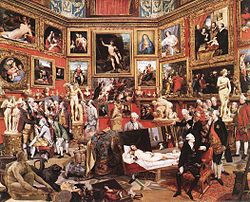
Other Hickman Windsor, 5th Earl of Plymouth FRS (30 May 1751 - 12 June 1799), styled Lord Windsor until 1771, was an English nobleman.

Other Hickman Windsor, 5th Earl of Plymouth FRS (30 May 1751 - 12 June 1799), styled Lord Windsor until 1771, was an English nobleman.
Styled Lord Windsor from birth, he was the eldest son of Other Windsor, 4th Earl of Plymouth and the Honourable Catherine, daughter of Thomas Archer, 1st Baron Archer. [1] He was elected a Fellow of the Royal Society on 22 April 1773. He was Colonel of the Glamorganshire Militia, 6 August 1779. [2] Other Windsor, 5th Earl of Plymouth was featured in Johan Zoffany's painting Tribuna of the Uffizi painted between 1772 and 1778. The 5th Earl is one of a number of visiting English noblemen to the Tribuna room in the Uffizi in Florence, Italy. The painting is part of the United Kingdom's Royal Collection. [3]
Lord Plymouth married his first cousin the Honourable Sarah, daughter of Andrew Archer, 2nd Baron Archer, on 20 May 1778. She was a notable botanist. They had several children, including:
Lord Plymouth died in June 1799, aged 48, and was succeeded in the earldom by his son, Other. The Dowager Countess of Plymouth married as her second husband William Amherst, 2nd Baron Amherst, later Earl Amherst. [1]
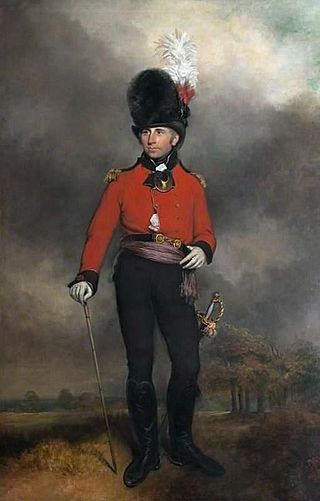
William Pitt Amherst, 1st Earl Amherst, GCH, PC was a British diplomat and colonial administrator. He was Governor-General of India between 1823 and 1828.

Earl of Powis (Powys) is a title that has been created three times. The first creation came in the Peerage of England in 1674 in favour of William Herbert, 3rd Baron Powis, a descendant of William Herbert, 1st Earl of Pembroke. In 1687, he was further honoured when he was made Marquess of Powis.

Earl of Plymouth is a title that has been created three times: twice in the Peerage of England and once in the Peerage of the United Kingdom.
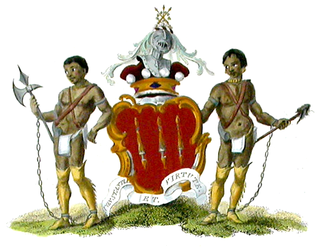
Earl Amherst, of Arracan in the East Indies, was a title in the Peerage of the United Kingdom. It was created on 19 December 1826, for William Amherst, 2nd Baron Amherst, the Governor-General of India. He was made Viscount Holmesdale, in the County of Kent, at the same time, also in the Peerage of the United Kingdom.
Viscount Windsor is a title that has been created twice.

John Frederick Sackville, 3rd Duke of Dorset, KG was the only son of Lord John Philip Sackville, second son of Lionel Sackville, 1st Duke of Dorset. His mother was the former Lady Frances Leveson-Gower. He succeeded to the dukedom in 1769 on the death of his uncle, Charles Sackville, 2nd Duke of Dorset. He was the British Ambassador to France from 1784 and returned to England in August 1789 following the escalation of the French Revolution.
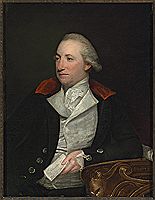
John Stuart, 1st Marquess of Bute PC, FRS, styled Lord Mount Stuart until 1792 and known as The Earl of Bute between 1792 and 1794, was a British nobleman, coalfield owner, diplomat and politician who sat in the House of Commons from 1766 to 1776.

Other Archer Windsor, 6th Earl of Plymouth was an English nobleman, the eldest and only surviving son of the 5th Earl of Plymouth by his wife and cousin, Hon. Sarah Archer, daughter and eventual co-heiress of the 2nd Baron Archer. He was the sixth Earl of Plymouth of the 1682 creation.

George Legge, 3rd Earl of Dartmouth KG, PC, FRS, styled Viscount Lewisham until 1801, was a British politician who sat in the House of Commons from 1778 to 1784.
Thomas Hickman-Windsor, 1st Earl of Plymouth, PC, was the son of Dixie Hickman and his wife Elizabeth Windsor, sister and heiress of Thomas Windsor, 6th Baron Windsor. He assumed the additional surname of Windsor and succeeded to the Windsor family's estate around Hewell Grange near Redditch in 1645. The same year he distinguished himself in the Battle of Naseby. Hickman-Windsor impressed King Charles I by relieving his garrison at High Ercall.
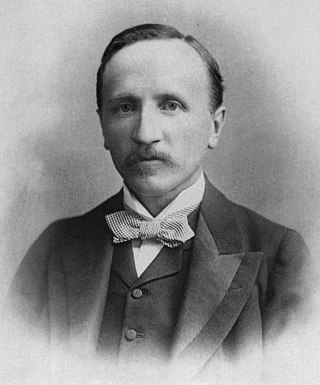
Robert George Windsor-Clive, 1st Earl of Plymouth,, known as the 14th Baron Windsor between 1869 and 1905, was a British nobleman and Conservative politician. He was the founding President of the London Society.

Ivor Miles Windsor-Clive, 2nd Earl of Plymouth GCStJ, PC was an English nobleman and Conservative Party politician.

The Tribuna of the Uffizi (1772–1778) by Johan Zoffany is a painting of the north-east section of the Tribuna room in the Uffizi in Florence, Italy. The painting is part of the United Kingdom's Royal Collection.
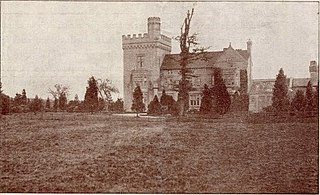
Ladbrooke is an historic estate in the parish of Tanworth-in-Arden, Warwickshire, England. The early history until the late 14th century is sparse and inextricably confused with the manor and parish of Ladbroke near Southam in Warwickshire, 34 km to the south-east. The confusion arises not only because both places within the same county are spelled variously and identically in historic documents, but mainly because the mediaeval de Lodbroke family appear to have held estates in each place. The 1619 Heraldic Visitation of Warwickshire which gives the pedigree of the "de Lodbroke" family, states them as "Dominus de Lodbrooke" and makes no mention of Tanworth-in-Arden. The Victoria County History is however clear that the seat of the de Lodbroke family was Ladbroke near Southam and not Ladbrooke in the parish of Tanworth-in-Arden.
Lieutenant-Colonel George Herbert Windsor Windsor-Clive was a British Conservative Party politician.
Other Windsor may refer to:

George Nassau Clavering-Cowper, 3rd Earl Cowper was an English peer who went on the Grand Tour as a young man, but actually emigrated. Despite becoming a member of parliament and later inheriting lands and the title of Earl Cowper in England, he remained in Italy. He amassed a valuable art collection and became a Prince of the Holy Roman Empire. He was a patron of the arts and science.

Andrew Archer, 2nd Baron Archer, 18th-century British Whig politician, styled the Hon. Andrew Archer between 1747 and 1768.
Lieutenant-General Thomas Windsor, 1st Viscount Windsor, styled The Honourable Thomas Windsor until 1699, was a British Army officer, landowner and Tory politician who sat in the English and British House of Commons between 1685 and 1712. He was then elevated to the British House of Lords as one of Harley's Dozen.

Sarah Amherst, Countess Amherst, credited as Sarah Amherst, was a British naturalist and botanist who lived in India. She identified several species which were named after her, including a variety of pheasant and a flowering tree.